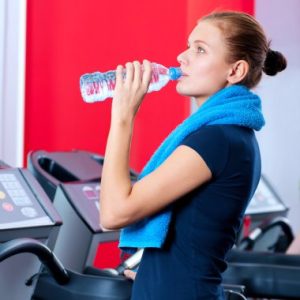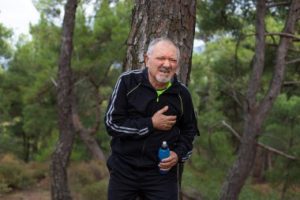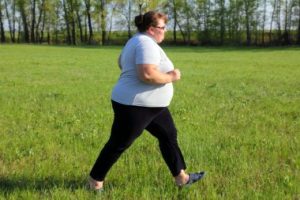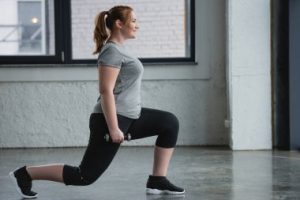
Can Lack Of Exercise Cause Shortness Of Breath (5 Helpful Guidelines)
Can lack of exercise cause shortness of breath? This question underscores the critical link between physical activity and respiratory health. Without regular exercise, the body’s respiratory system may weaken, leading to reduced lung capacity and cardiovascular efficiency, potentially resulting in dyspnea. In an age where technology often substitutes physical activity, the repercussions of a sedentary lifestyle are becoming alarmingly evident.
Among the myriad health issues linked to inactivity, shortness of breath stands out as a particularly distressing and often misunderstood symptom. Imagine walking up a flight of stairs or playing with your children and suddenly finding yourself gasping for air, your chest tightening as if gripped by an invisible hand. This experience, while unsettling, can frequently be traced back to one common denominator: a lack of regular exercise.
Bodies are intricately designed to move, and when they don’t, the cardiovascular and respiratory systems can suffer dramatically. As muscles weaken and endurance wanes, even simple tasks can leave you breathless, highlighting a critical, yet often overlooked, consequence of your increasingly inactive lives. Understanding the connection between physical inactivity and respiratory distress is not just important for fitness enthusiasts but for anyone striving to maintain a healthy, functional life.

Can Lack Of Exercise Cause Shortness Of Breath
Yes, lack of exercise can cause shortness of breath. Physical inactivity leads to weakened cardiovascular and respiratory systems. Reduced fitness levels make everyday activities feel more strenuous. Sedentary lifestyle contributes to muscle deconditioning. This results in breathlessness during exertion.
Impact on Cardiovascular Health
A sedentary lifestyle negatively impacts cardiovascular health. Regular exercise strengthens the heart and improves circulation. Without it, the heart pumps less efficiently, leading to decreased oxygen delivery to tissues. This inefficiency manifests as shortness of breath during physical activity. Blood pressure and cholesterol levels can also rise due to inactivity, further stressing the heart.
Respiratory System Weakening
Lack of exercise affects the respiratory system. Physical inactivity leads to shallow breathing and reduced lung capacity. Over time, respiratory muscles weaken. This makes it harder for the lungs to fully expand and contract. Consequently, even minor physical tasks can leave one gasping for air. Proper breathing techniques and regular aerobic exercise are essential to maintaining lung health.
Muscle Deconditioning
Muscle deconditioning is another consequence of a sedentary lifestyle. Regular physical activity maintains muscle tone and strength. Without exercise, muscles lose their efficiency and endurance. This includes the muscles involved in breathing, such as the diaphragm. Weaker muscles require more effort to perform simple tasks, causing early fatigue and breathlessness. Engaging in regular exercise helps keep muscles conditioned and improves overall stamina.
Weight Gain and Its Effects
Lack of exercise often leads to weight gain. Extra weight puts additional pressure on the respiratory system. This added burden can cause shortness of breath, especially during physical exertion. Obesity is closely linked to various respiratory issues, including obstructive sleep apnea and chronic obstructive pulmonary disease (COPD). Maintaining a healthy weight through regular physical activity can alleviate these symptoms and improve breathing.
Psychological Factors
A sedentary lifestyle can also impact mental health, contributing to feelings of anxiety and stress. These psychological factors can exacerbate the sensation of shortness of breath. Anxiety often leads to hyperventilation a condition where rapid, shallow breathing reduces carbon dioxide levels in the blood, causing dizziness and breathlessness. Regular exercise is known to reduce stress and anxiety, promoting a sense of well-being and better respiratory function.
Improving Breathlessness through Exercise
Regular exercise is crucial to mitigating shortness of breath caused by inactivity. Cardiovascular exercises like walking, jogging, or cycling enhance heart and lung function. Strength training improves muscle efficiency, including the respiratory muscles. Gradually increasing physical activity can lead to significant improvements in breath control and overall endurance. Consulting with healthcare providers before starting an exercise regimen ensures safety and effectiveness, especially for individuals with preexisting conditions.
Physiological Basis
Respiratory System
The respiratory system, composed of the lungs, airways, and respiratory muscles, is responsible for gas exchange, delivering oxygen to the bloodstream, and expelling carbon dioxide from the body. Regular exercise enhances respiratory efficiency by strengthening the respiratory muscles, increasing lung capacity, and improving the efficiency of oxygen and carbon dioxide exchange.
Conversely, a lack of exercise can lead to deconditioning of these muscles, reduced lung capacity, and decreased overall respiratory function. This physiological decline can cause shortness of breath even during minimal exertion, as the body struggles to meet oxygen demands and effectively expel carbon dioxide. Regular physical activity is essential to maintaining optimal respiratory health and preventing such issues.
Cardiovascular System
The physiological basis of how a lack of exercise can cause shortness of breath is deeply rooted in the interplay between the cardiovascular and respiratory systems. Regular physical activity strengthens the heart muscle, enhances blood circulation, and improves lung capacity and efficiency. When exercise is absent, the heart and lungs do not receive the necessary stimuli to maintain optimal function.
The cardiovascular system, particularly the heart, may weaken, reducing its ability to pump blood efficiently, which in turn diminishes oxygen delivery to tissues. Concurrently, the respiratory muscles, including the diaphragm, can lose strength and endurance, impairing effective breathing. This inefficiency results in a higher perceived effort during physical activity, leading to shortness of breath even with minimal exertion. Therefore, physical fitness is crucial for maintaining cardiovascular health and ensuring the respiratory system functions effectively, highlighting the importance of regular exercise in preventing dyspnea.
Muscular System
The physiological basis of how a lack of exercise can cause shortness of breath primarily involves the muscular system. Muscle strength and endurance are crucial for efficient respiratory function, as they ensure the respiratory muscles, particularly the diaphragm and intercostal muscles, can effectively facilitate breathing.
Physical inactivity leads to the weakening and atrophy of these muscles, reducing their ability to expand and contract the thoracic cavity efficiently. Consequently, this diminished muscle function can result in an increased effort required for breathing, causing the sensation of shortness of breath. Additionally, the overall reduction in muscle endurance means that these muscles fatigue more quickly during physical activity, exacerbating breathlessness and contributing to a cycle of reduced physical fitness and respiratory capacity.
Mechanisms Leading to Shortness of Breath
Decreased Lung Capacity
Shortness of breath, or dyspnea, can arise from several mechanisms, with decreased lung capacity being a significant contributor. A sedentary lifestyle plays a pivotal role in diminishing lung function, as prolonged physical inactivity leads to reduced respiratory muscle strength and endurance. This decline hampers the lungs’ ability to expand fully, thereby decreasing both vital capacity—the maximum amount of air expelled after a deep inhalation—and tidal volume, which is the amount of air inhaled or exhaled during a normal breath.
Over time, this reduction in lung volumes limits the efficiency of gas exchange, as less oxygen is taken in and less carbon dioxide is expelled with each breath. Consequently, even minimal physical exertion can precipitate shortness of breath, as the respiratory system struggles to meet the body’s increased oxygen demands. This interplay between physical inactivity and compromised lung function underscores the importance of regular exercise in maintaining respiratory health and preventing dyspnea.
Reduced Cardiovascular Efficiency
Mechanisms leading to shortness of breath often involve reduced cardiovascular efficiency, impacting heart rate and stroke volume, which together contribute to decreased oxygen transport efficiency. When cardiovascular efficiency declines, the heart’s ability to pump blood effectively is compromised, resulting in a reduced stroke volume—the amount of blood ejected with each heartbeat. This necessitates an increased heart rate to maintain adequate blood flow, which can strain the heart and further diminish its performance.
Concurrently, the efficiency of oxygen transport to tissues decreases, as the compromised cardiac output limits the amount of oxygen-rich blood reaching the body’s cells. The body’s response to this deficit includes increased respiratory effort in an attempt to enhance oxygen uptake and delivery, manifesting as shortness of breath. This symptom can be particularly pronounced during physical exertion, as the demand for oxygen rises and the cardiovascular system’s impaired function becomes more apparent. Consequently, conditions such as heart failure, anemia, or pulmonary diseases, which exacerbate these mechanisms, often lead to noticeable dyspnea, severely impacting an individual’s quality of life.

Muscular Atrophy
Shortness of breath, or dyspnea, can result from several interrelated mechanisms involving muscular atrophy, loss of respiratory muscle strength, and decreased overall muscle strength. Muscular atrophy, often a consequence of prolonged inactivity, chronic illness, or aging, leads to the weakening and wasting of muscles, including those essential for respiration.
As respiratory muscles, such as the diaphragm and intercostal muscles, lose strength, their ability to facilitate efficient breathing diminishes. This loss of respiratory muscle strength means that even normal breathing requires significantly more effort, leading to an increased perception of breathlessness.
Additionally, decreased overall muscle strength exacerbates this issue by making the physical effort of breathing more taxing on the body. When the muscles are weak, the energy cost of breathing rises, often resulting in an inadequate supply of oxygen to meet the body’s demands, further contributing to the sensation of shortness of breath. This cascade of events underscores the importance of maintaining muscle mass and strength through regular physical activity and targeted respiratory exercises to mitigate these effects and improve respiratory efficiency.
Secondary Health Effects Contributing to Shortness of Breath
Weight Gain and Obesity
Weight gain and obesity significantly contribute to shortness of breath through several interconnected mechanisms. As body weight increases, the demand on both the respiratory and cardiovascular systems intensifies. The heart must work harder to circulate blood throughout the body, leading to increased cardiac workload and potential strain on the heart.
Concurrently, the respiratory system faces elevated demands, as the lungs must work more vigorously to supply adequate oxygen. Additionally, excessive adipose tissue around the chest and abdomen can impose a mechanical restriction on the diaphragm, limiting its ability to contract and expand effectively. This restriction impairs lung capacity, making breathing more laborious and less efficient.
Consequently, individuals with obesity often experience reduced lung volumes and compromised respiratory function, exacerbating the sensation of shortness of breath. These physiological challenges highlight the critical impact of obesity on respiratory health, underscoring the importance of managing weight to maintain optimal respiratory function and overall well-being.

Comorbid Conditions
Secondary health effects contributing to shortness of breath often involve comorbid conditions that exacerbate respiratory issues. For instance, the development of hypertension and diabetes can lead to complications affecting the cardiovascular and respiratory systems. Hypertension increases the workload on the heart, potentially leading to heart failure, which can cause pulmonary congestion and subsequent shortness of breath.
Similarly, diabetes can damage blood vessels and nerves, impairing oxygen delivery to tissues and reducing lung function. Additionally, individuals with these conditions are at a heightened risk for developing chronic obstructive pulmonary disease (COPD) and asthma. COPD, characterized by long-term breathing problems and poor airflow, can significantly limit physical activity and quality of life due to persistent shortness of breath. Asthma a condition marked by inflamed and narrowed airways, further contributes to breathing difficulties. Together, these comorbidities create a complex interplay that worsens shortness of breath and requires comprehensive management strategies to mitigate their impact on patients’ overall health and well-being.
Anxiety and Stress
Secondary health effects contributing to shortness of breath can be diverse, with anxiety and stress playing a significant role. When individuals experience anxiety, their body’s fight-or-flight response is triggered, often leading to rapid, shallow breathing or hyperventilation, which can exacerbate the sensation of shortness of breath. This creates a vicious cycle, where the fear of not being able to breathe properly increases anxiety, which in turn worsens the breathing difficulties.
Physical inactivity further compounds this issue, as it can lead to deconditioning of the respiratory muscles, making it more challenging to engage in physical activities without experiencing breathlessness. Moreover, physical inactivity has a negative impact on mental health, contributing to conditions like depression and heightened anxiety. The relationship between anxiety, panic attacks, and shortness of breath is intricate, as panic attacks often include acute episodes of intense anxiety accompanied by severe shortness of breath, chest pain, and a feeling of suffocation. This not only affects the physical state but also reinforces anxiety, making individuals more susceptible to future episodes and perpetuating a cycle of anxiety and respiratory distress.
Preventive Measures and Interventions
Benefits of Regular Exercise
Preventive measures and interventions play a pivotal role in maintaining overall health and well-being. Regular exercise stands out as a cornerstone in this pursuit, offering a multitude of benefits that extend far beyond physical fitness. By incorporating exercise into one’s routine, individuals can experience a range of positive outcomes. Firstly, improved respiratory function is a notable advantage, as exercise engages the respiratory system, promoting better lung capacity and efficiency.
Concurrently, enhanced cardiovascular health emerges as a significant benefit, with exercise stimulating circulation, reducing the risk of heart disease, and regulating blood pressure. Moreover, increased muscle strength and endurance are outcomes that contribute to functional fitness, enabling individuals to perform daily tasks with greater ease and reducing the risk of injury. Thus, by embracing regular exercise as a preventive measure, individuals empower themselves with a proactive approach to health, fostering vitality and longevity.
Types of Effective Exercises
Preventive measures and interventions for addressing shortness of breath due to lack of exercise encompass a multifaceted approach aimed at promoting physical activity and enhancing respiratory function. Regular exercise is crucial for maintaining cardiovascular health and lung capacity. Incorporating various types of effective exercises into one’s routine can significantly mitigate the risk of experiencing shortness of breath.
Aerobic exercises such as walking, running, and swimming are particularly beneficial as they improve overall cardiovascular fitness, enhance lung function, and boost oxygen circulation throughout the body. These activities not only strengthen the heart and lungs but also improve endurance, making everyday activities easier to perform without feeling breathless.
Additionally, incorporating strength training and resistance exercises into one’s regimen helps build muscle strength, which indirectly supports respiratory function by reducing the effort required for breathing during physical exertion. By strengthening the muscles involved in respiration, individuals can breathe more efficiently, thereby reducing the likelihood of experiencing shortness of breath. Furthermore, practicing specific breathing exercises and techniques can be instrumental in enhancing lung capacity, promoting deeper breathing, and improving respiratory muscle control.
Techniques such as pursed lip breathing and diaphragmatic breathing help individuals regulate their breathing patterns, increase oxygen intake, and alleviate feelings of breathlessness. These exercises not only improve respiratory efficiency but also enhance overall relaxation and stress management, contributing to better respiratory health. In conclusion, a comprehensive approach that incorporates aerobic exercises, strength training, and breathing techniques is essential for preventing shortness of breath associated with lack of exercise, promoting optimal respiratory function, and enhancing overall well-being.

Guidelines for Physical Activity
Preventive measures and interventions for addressing shortness of breath due to lack of exercise encompass a multifaceted approach aimed at promoting physical activity while mitigating potential barriers. Central to this effort are guidelines for physical activity endorsed by health organizations, such as the World Health Organization (WHO) and the American Heart Association (AHA). These guidelines typically recommend at least 150 minutes of moderate-intensity aerobic activity or 75 minutes of vigorous-intensity aerobic activity per week, along with muscle-strengthening activities on two or more days per week.
However, it’s essential to recognize that individual needs may vary based on factors like age, fitness level, and underlying health conditions. Tailored exercise plans, therefore, play a crucial role in ensuring that people of diverse populations can engage in safe and effective physical activity. For instance, older adults may benefit from exercises focusing on balance and flexibility to reduce the risk of falls, while individuals with chronic conditions such as asthma or heart disease may require specialized supervision and adaptations to their exercise routines. Overcoming barriers to regular exercise is another critical aspect of preventive measures. These barriers can range from lack of time and motivation to physical limitations and environmental constraints.
Strategies to address these barriers may include providing access to affordable fitness facilities, offering community-based exercise programs, promoting active transportation options like walking or cycling, and leveraging technology through fitness apps and wearable devices to monitor progress and provide motivation. Additionally, education and awareness campaigns can help dispel misconceptions about exercise and highlight its numerous benefits, including improved cardiovascular health, enhanced respiratory function, and overall well-being. By implementing a comprehensive approach that combines evidence-based guidelines, personalized exercise plans, and strategies to overcome barriers, it’s possible to effectively prevent and manage shortness of breath associated with lack of exercise, ultimately empowering individuals to lead healthier, more active lifestyles.
Frequently Asked Questions (FAQ) about Can Lack Of Exercise Cause Shortness Of Breath
Q1: Can a lack of exercise lead to shortness of breath?
A1: Yes, a lack of exercise can contribute to shortness of breath. Regular physical activity helps maintain cardiovascular and respiratory health. Without it, the body’s ability to efficiently use oxygen and support muscle activity decreases, leading to increased breathlessness during physical exertion.
Q2: How does physical inactivity affect the respiratory system?
A2: Physical inactivity can weaken the respiratory muscles, reduce lung capacity, and impair the efficiency of oxygen exchange in the lungs. This can make breathing feel more laborious, especially during activities that require increased oxygen intake.
Q3: Are there other health issues caused by a sedentary lifestyle that might contribute to shortness of breath?
A3: Yes, a sedentary lifestyle can lead to weight gain, poor cardiovascular health, and decreased muscle strength, all of which can exacerbate shortness of breath. Additionally, conditions like anxiety and stress, often associated with a lack of physical activity, can also contribute to breathing difficulties.
Q4: Can improving physical fitness reduce shortness of breath?
A4: Absolutely. Regular exercise strengthens the heart and lungs, increases lung capacity, and improves overall endurance. This can significantly reduce the sensation of shortness of breath during both routine activities and more strenuous exercise.
Q5: What types of exercises are recommended to help with shortness of breath?
A5: Aerobic exercises, such as walking, cycling, and swimming, are particularly effective for improving cardiovascular and respiratory health. Additionally, breathing exercises, yoga, and strength training can also enhance respiratory muscle function and overall fitness.
Q6: How quickly can one see improvements in breathing after starting an exercise regimen?
A6: Improvements can vary based on individual health and fitness levels, but many people begin to notice better breathing within a few weeks of consistent exercise. Over several months, significant enhancements in respiratory function and endurance are common.
Q7: Is it safe to start exercising if I experience frequent shortness of breath?
A7: If you experience frequent or severe shortness of breath, it’s important to consult a healthcare professional before starting any exercise program. They can help determine the underlying cause and recommend a safe and appropriate exercise plan.
Q8: Can diet and hydration also affect shortness of breath related to physical inactivity?
A8: Yes, a balanced diet and proper hydration support overall health, including respiratory function. Excess weight from poor diet can increase the workload on the respiratory system, while dehydration can thicken mucus in the airways, both contributing to shortness of breath.
Q9: Are there any specific breathing techniques that can help alleviate shortness of breath?
A9: Yes, techniques such as diaphragmatic breathing, pursed-lip breathing, and paced breathing can help manage and reduce shortness of breath. These methods promote better oxygen exchange and help calm the respiratory system.
Q10: Can shortness of breath due to lack of exercise be mistaken for other medical conditions?
A10: Yes, shortness of breath can be a symptom of various medical conditions, such as asthma, chronic obstructive pulmonary disease (COPD), heart disease, and anxiety disorders. It’s important to get a thorough medical evaluation to rule out these conditions and determine the appropriate course of action.
Conclusion
Lack of exercise can indeed lead to shortness of breath, primarily because physical inactivity contributes to decreased cardiovascular and respiratory efficiency. Regular exercise strengthens the heart, improves lung capacity, and enhances overall stamina, making daily activities less taxing on the body.
Without sufficient physical activity, muscles, including those involved in respiration, may weaken, leading to difficulty in maintaining adequate oxygen levels during exertion. Furthermore, a sedentary lifestyle is often associated with weight gain and poor overall fitness, both of which can exacerbate breathing difficulties. Thus, maintaining an active lifestyle is crucial for preserving respiratory health and preventing shortness of breath.